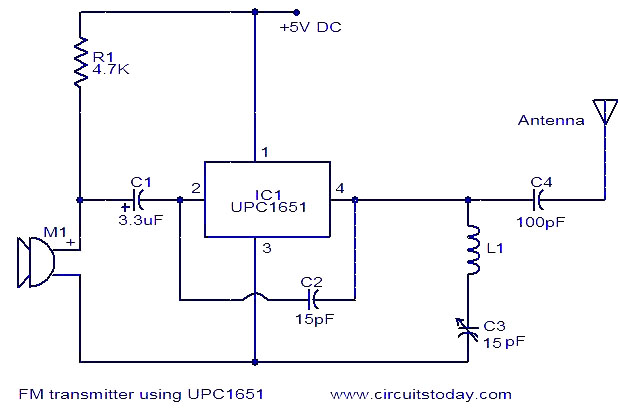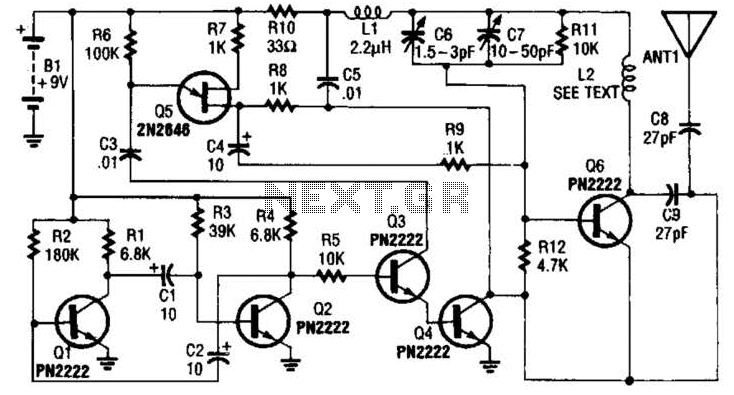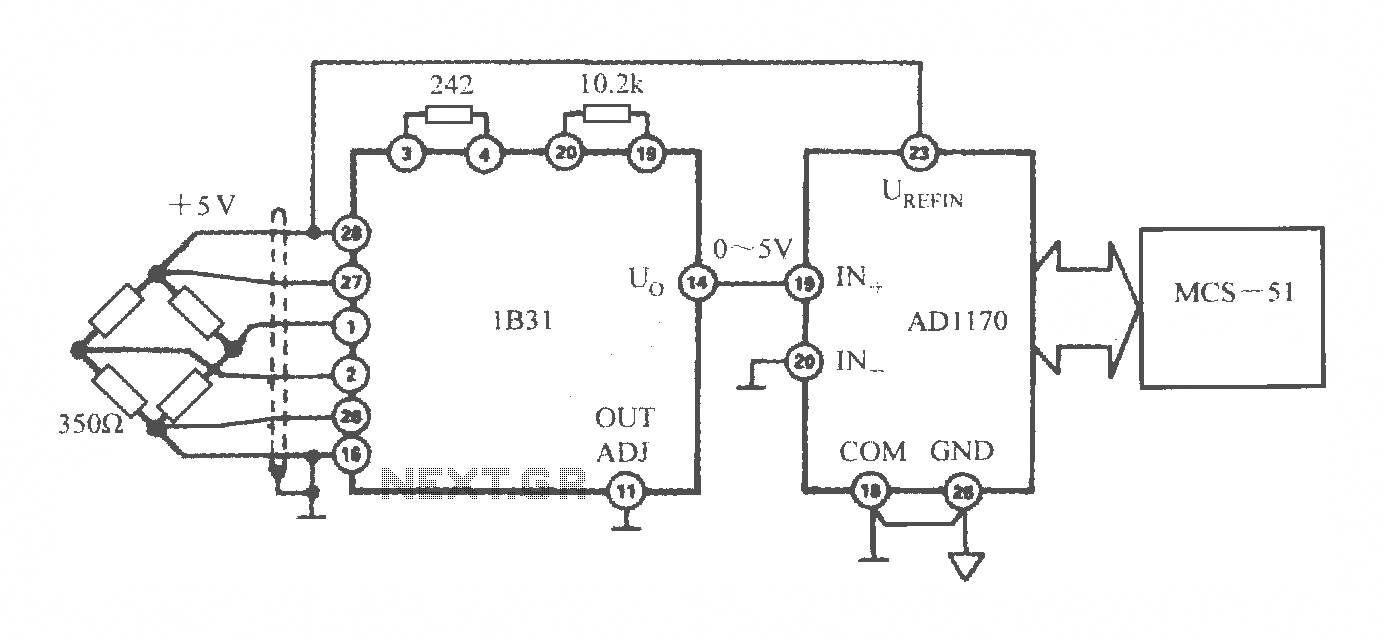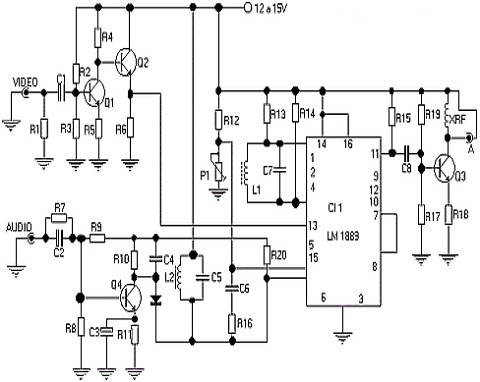
FM Transmitter
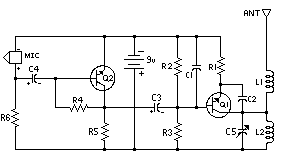
Here is the schematic, PC board pattern, and parts placement for a low powered FM transmitter. The range of the transmitter when running at 9V is about 300 feet. Running it from 12V increases the range to about 400 feet. This transmitter should not be used as a room or telephone bug. More: L1 and L2 are 5 turns of 28 AWG enamel coated magnet wire wound with a inside diameter of about 4mm. The inside of a ballpoint pen works well (the plastic tube that holds the ink). Remove the form after winding then install the coil on the circuit board.
The described low-power FM transmitter is designed for short-range audio transmission, suitable for applications such as personal broadcasting or educational projects. The schematic typically includes a power supply section, an oscillator circuit, an amplifier stage, and an output stage for modulation.
The transmitter operates efficiently at voltages of 9V and 12V, with the increased voltage resulting in a notable enhancement in transmission range. The specified range of 300 feet at 9V and 400 feet at 12V indicates that the transmitter is optimized for low-power applications while still providing adequate coverage.
Coils L1 and L2 are critical components in the oscillator circuit. They are constructed from 28 AWG enamel-coated magnet wire, which is suitable for RF applications due to its lower resistance and ability to handle high frequencies. The coils should be wound with 5 turns, ensuring that the inductance is within the required specifications for the oscillator circuit to function correctly. The use of a ballpoint pen tube as a winding form is a practical and accessible method for achieving the desired coil dimensions, with an inside diameter of approximately 4mm. After winding, it is essential to remove the form to allow for proper installation on the printed circuit board (PCB).
The PCB design will include designated areas for all components, including the coils, resistors, capacitors, and any integrated circuits used in the transmitter. Proper placement of components is crucial to minimize interference and ensure optimal performance. The layout should also consider the RF characteristics of the circuit, including trace width and length, to avoid signal loss and maintain signal integrity.
In summary, this low-power FM transmitter schematic provides a foundation for a compact and efficient broadcasting solution, with specific construction techniques for key components that enhance performance and reliability.Here is the schematic, PC board pattern, and parts placement for a low powered FM transmitter. The range of the transmitter when running at 9V is about 300 feet. Running it from 12V increases the range to about 400 feet. This transmitter should not be used as a room or telephone bug. # L1 and L2 are 5 turns of 28 AWG enamel coated magnet wire wound with a inside diameter of about 4mm. The inside of a ballpoint pen works well (the plastic tube that holds the ink). Remove the form after winding then install the coil on the circuit board 🔗 External reference
The described low-power FM transmitter is designed for short-range audio transmission, suitable for applications such as personal broadcasting or educational projects. The schematic typically includes a power supply section, an oscillator circuit, an amplifier stage, and an output stage for modulation.
The transmitter operates efficiently at voltages of 9V and 12V, with the increased voltage resulting in a notable enhancement in transmission range. The specified range of 300 feet at 9V and 400 feet at 12V indicates that the transmitter is optimized for low-power applications while still providing adequate coverage.
Coils L1 and L2 are critical components in the oscillator circuit. They are constructed from 28 AWG enamel-coated magnet wire, which is suitable for RF applications due to its lower resistance and ability to handle high frequencies. The coils should be wound with 5 turns, ensuring that the inductance is within the required specifications for the oscillator circuit to function correctly. The use of a ballpoint pen tube as a winding form is a practical and accessible method for achieving the desired coil dimensions, with an inside diameter of approximately 4mm. After winding, it is essential to remove the form to allow for proper installation on the printed circuit board (PCB).
The PCB design will include designated areas for all components, including the coils, resistors, capacitors, and any integrated circuits used in the transmitter. Proper placement of components is crucial to minimize interference and ensure optimal performance. The layout should also consider the RF characteristics of the circuit, including trace width and length, to avoid signal loss and maintain signal integrity.
In summary, this low-power FM transmitter schematic provides a foundation for a compact and efficient broadcasting solution, with specific construction techniques for key components that enhance performance and reliability.Here is the schematic, PC board pattern, and parts placement for a low powered FM transmitter. The range of the transmitter when running at 9V is about 300 feet. Running it from 12V increases the range to about 400 feet. This transmitter should not be used as a room or telephone bug. # L1 and L2 are 5 turns of 28 AWG enamel coated magnet wire wound with a inside diameter of about 4mm. The inside of a ballpoint pen works well (the plastic tube that holds the ink). Remove the form after winding then install the coil on the circuit board 🔗 External reference
